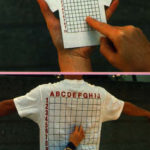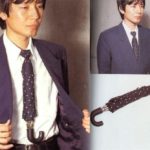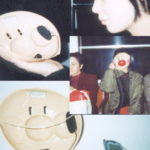We’re made to believe that every creation has a purpose. Nothing’s created just for the sole purpose of existing. The Japanese, however, believe otherwise. There are just some things that need to be invented even when people don’t really need it.
Finding it difficult to spread butter on your morning toast? There’s an invention for that. Have a terrible cold and constantly need tissue to blow your nose? The Japanese have exactly what you need.
A quick trip to a Japanese dollar store will prove how they have managed to come up with so many inventions you thought you didn’t need, but now what you’ve seen it, you start wondering how you never thought of it.
Believe it or not, there’s an art of inventing useless stuff that’s too embarrassing to use, and it boasts more than a decade’s worth of inventions, not always entirely worthless.
What is Chindogu?

Chindogu is the Japanese art of inventing useless things. These ingenious inventions aim to answer mundane difficulties of daily life, but they’re really too ineffectual to be of use to anyone.
It’s coined by the Japanese inventor and editor, Kenji Kawakami. The literal meaning of Chindogu is “unusual tool”, but Kawakami argues that “weird tool” is a more apt translation. From the term itself, it’s a creation that’s useless to anyone.
This art form is Kawakami’s protest against materialism. He despises how everything is turned into a commodity, patented and commercially sold, even for things that should be shared with everyone. Thus, chindogu was born.
The 10 Commandments of Chindogu

If you’re an aspiring Chindogu inventor, there’s a set of rules that need to be adhered before your invention can be considered as one. For the creative mind, following these 10 commandments of Chindogu make the art of useless invention is more difficult than one would expect.
1. It cannot be for real use.
While the art movement’s motto is “not always useless, but not altogether useless”, A Chindogu invention cannot be incredibly useful that you end up using it all the time, because that defeats the purpose of it.
2. It must exist.
Of course, before it can be considered as Chindogu, it must exist firsts. Ideas are great, but if there’s no physical manifestation of it, it can’t be considered as such.
3. It must have the spirit of anarchy.
Probably the noblest commandment in the list, the invention must have the full liberty to be completely useless. It aims to challenge the standard notion that everything has the function to be useful.
4. It must be a tool that solves everyday life problems.
Chindogu doesn’t aim to solve worldwide hunger or find the key to world peace. It aims lows and it aims small. It only strives to provide silly solutions to everyday difficulties.
5. It is not for sale.
Your useless invention must not be sold commercially. You can create a chindogu for others, but to accept money for it is breaking the rules. However, Kawakami is not above breaking this rule if it meant providing aid to help remove land mines in Cambodia.
6. Its primary purpose of creation is to be funny.
Great if your chindogu is something others can actually use. But is it funny? If it’s not, then it’s probably not a chindogu at all. Then again, the humor in this is merely a side effect in your sincere way of finding a futile solution to a non-issue.
7. It should not be a propaganda.
Aside from the sole reason of solving a small daily problem, it must have no other reason for existing. Chindogu has almost nonexistent political inclinations.
8. It is not a taboo.
If it cannot even follow the most basic standards of society, then it’s not chindogu. There must be no sexual innuendo, sick or vulgar jokes involved in one.
9. It cannot be patented.
Unlike regular artistic or technical inventions, a chindogu doesn’t require a patent. In fact, it must not be patented or copyrighted, and instead, it needs to be shared to anyone who needs it.
10. It must have no prejudice.
Chindogu should not favor any race, age, gender, etc. It cannot pick who can enjoy and use the invention, and instead, everyone’s given equal chance to enjoy it.
Chindogu Inventions Are Not so Useless After All
Some might think that inventing such art is useless in itself, but people have taken interest and made the movement popular even outside Japan.
In 1995, Kawakami, together with Dan Papia, published an English book titled 101 Useless Japanese Inventions: The Art of Chindōgu. The book provides detailed examples of chindogu, including an item we now know as a selfie stick. The book was a commercial success, and they ended up producing volumes more.
On the same year, a BBC program for children was created on the basis of Chindogu. It’ll Never Work? ran from 1993 to 1995 for a total of eight seasons. The show traveled worldwide to feature inventions that defied rules and logic just to check if it would actually work. A spoof advert was played in between the main segment, in which they featured impractical inventions solving everyday problems.
The BBC program would go and win the Best Children’s Programme (Factual) in BAFTA TV Award in 1994.

The current generation will probably be more familiar with Simone Giertz, who run the Youtube channel Simone’s Robots. Branding herself as the “queen of shitty robots”, Giertz creates funny videos of her robots that automate menial everyday tasks, on the same vein as chindogu. Most of her inventions are too crazy and wild to be of actual use, but her 1.4 million subscribers on Youtube prove that people are interested and eager to see more of her inventions.
Through her Youtube channel, Giertz managed to collaborate with other innovators and even starred in TV shows where she displayed her ingenious inventions.
Some may think chindogu is too dumb to give it a second thought, but that’s kind of the point. Some chindogu inventions are too absurd, despite being useful. Then again, it won’t be chindogu if you wouldn’t be ashamed to use it in public.
Don’t think too much about it, because chindogu begs you not to take it too seriously.
(Featured image source: Chindogu)








